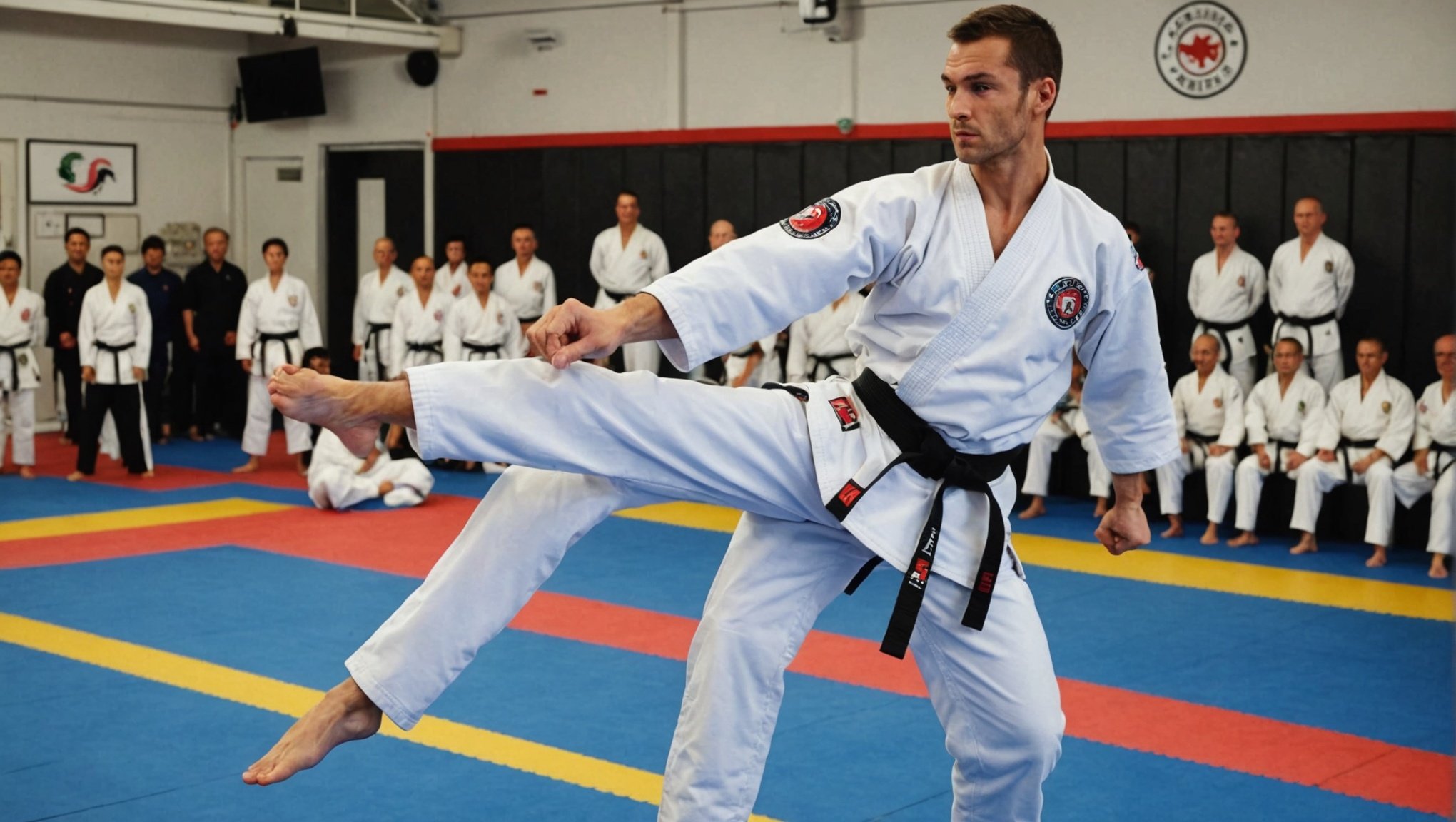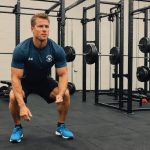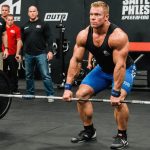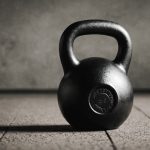Unlocking Flexibility: Dynamic Stretching Techniques for UK Karate Practitioners to Flexibility in Martial Arts
Flexibility is a cornerstone of martial arts, including karate. It enhances performance, reduces the risk of injury, and improves overall fitness. For UK karate practitioners, incorporating dynamic stretching techniques into their training routine can be a game-changer. In this article, we will delve into the world of stretching, exploring why it is crucial, how different martial arts can help, and providing practical tips and techniques to improve flexibility.
The Importance of Flexibility in Karate
Flexibility is not just about touching your toes; it’s about having a full range of motion that allows you to execute karate techniques with precision and power. Here are a few reasons why flexibility is essential for karate practitioners:
Additional reading : Mastering Mental Strength: Strategies for UK Combat Sports Athletes to Conquer Performance Anxiety
- Injury Prevention: Flexible muscles and joints are less prone to injury. When you have good flexibility, you can move more freely and absorb impacts better, reducing the risk of strains and tears.
- Improved Performance: Flexibility allows for better execution of techniques. For example, a karate practitioner with good flexibility can perform a roundhouse kick with greater height and power.
- Enhanced Mobility: Good flexibility improves mobility, enabling practitioners to move quickly and efficiently around the mat or ring.
Dynamic Stretching vs. Static Stretching
When it comes to stretching, there are two main types: dynamic and static. Here’s a brief comparison:
Dynamic Stretching
- Definition: Dynamic stretching involves moving your joints through a range of motion while keeping your muscles active.
- Examples: Leg swings, arm circles, and shadow boxing.
- Benefits: Prepares the muscles for physical activity, improves flexibility, and enhances performance.
- Quote: “Dynamic stretching is more effective for improving flexibility and performance because it mimics the movements you’ll be doing in your actual training,” says Phil Pierce, a martial arts instructor.
Static Stretching
- Definition: Static stretching involves holding a stretch for a period of time.
- Examples: Touching your toes, hamstring stretch, and quadriceps stretch.
- Benefits: Helps in relaxing the muscles after a workout and can improve flexibility over time.
- Quote: “Static stretching is great for post-workout recovery, but it should not be done before training as it can reduce muscle strength and power,” advises a fitness expert.
Cross-Training in Martial Arts for Improved Flexibility
Cross-training in various martial arts can significantly improve flexibility. Here’s how different disciplines can help:
This might interest you : Mastering Defense: Innovative Shadowboxing Techniques for UK Kickboxers
Kung Fu and Tai Chi
- Stretching Techniques: Kung Fu and Tai Chi incorporate traditional stretching techniques that focus on full-body flexibility. These include Qi Gong breathing exercises and slow, flowing movements that help in improving range of motion and reducing muscle tension[1].
- Benefits: These practices are low-impact, making them ideal for all ages and fitness levels. They improve balance, agility, and overall flexibility.
Muay Thai
- Stretching Techniques: Muay Thai involves dynamic stretching such as leg swings, knee lifts, and arm rotations. These movements prepare the muscles for the intense physical demands of the sport.
- Benefits: Muay Thai training enhances flexibility, especially in the hips, knees, and shoulders, which are crucial for kicks and punches.
Kickboxing
- Stretching Techniques: Kickboxing classes, such as Sanda Kickboxing, include a variety of dynamic stretches to prepare for high-energy workouts. These stretches focus on improving flexibility in the legs, hips, and lower back[1].
- Benefits: Kickboxing improves overall fitness, including flexibility, strength, and cardiovascular endurance.
Practical Tips and Techniques for Improving Flexibility
Here are some practical tips and techniques to help you improve your flexibility:
Warm-Up and Cool-Down Routines
- Warm-Up: Always start your training with a dynamic warm-up. This can include jogging in place, jumping jacks, leg swings, and arm circles.
- Cool-Down: After your training, incorporate static stretches to help your body recover. Focus on the major muscle groups used during your workout.
Specific Stretching Exercises
- Leg Swings: Stand with your feet hip-width apart and swing one leg forward and backward, then switch to the other leg.
- Hip Circles: Stand with your feet together and your hands on your hips. Move your hips in a large circle, first clockwise and then counterclockwise.
- Shadow Boxing: Practice shadow boxing to improve flexibility in your shoulders, arms, and torso.
Incorporating Mobility Exercises
- Mobility Exercises: Incorporate mobility exercises into your routine, such as rolling and jumping, which are often taught in children’s acrobatics classes[1].
- Benefits: These exercises improve flexibility, strength, and overall mobility.
Detailed Stretching Routine for Karate Practitioners
Here is a detailed stretching routine that you can incorporate into your training:
Dynamic Stretching Routine
- Leg Swings: 3 sets of 30 seconds each leg
- Arm Circles: 3 sets of 30 seconds each arm
- Hip Circles: 3 sets of 30 seconds each direction
- Shadow Boxing: 3 sets of 1 minute
- Knee Lifts: 3 sets of 30 seconds each leg
- Calf Raises: 3 sets of 30 seconds
Static Stretching Routine
- Hamstring Stretch: Hold for 30 seconds, 3 sets each leg
- Quadriceps Stretch: Hold for 30 seconds, 3 sets each leg
- Chest Stretch: Hold for 30 seconds, 3 sets
- Shoulder Stretch: Hold for 30 seconds, 3 sets each arm
- Hip Flexor Stretch: Hold for 30 seconds, 3 sets each leg
Table: Comparing Different Martial Arts for Flexibility
| Martial Art | Stretching Techniques | Benefits |
|---|---|---|
| Kung Fu | Qi Gong, traditional stretches | Improves balance, agility, and overall flexibility |
| Muay Thai | Leg swings, knee lifts, arm rotations | Enhances flexibility in hips, knees, and shoulders |
| Kickboxing | Dynamic stretches for legs, hips, and lower back | Improves overall fitness, including flexibility and strength |
| Tai Chi | Slow, flowing movements | Low-impact, improves balance, agility, and flexibility |
Listening to Your Body and Avoiding Overstretching
It’s crucial to listen to your body and avoid overstretching, which can lead to injuries.
- Proper Form: Always maintain proper form when stretching to avoid straining your muscles.
- Gradual Progression: Gradually increase the depth and duration of your stretches over time.
- Quote: “The key is to listen to your body and not push beyond what feels comfortable. Flexibility is about gradual progression, not sudden gains,” advises a martial arts instructor.
Improving flexibility is a continuous process that requires consistent practice and the right techniques. By incorporating dynamic stretching, cross-training in various martial arts, and following a well-structured stretching routine, UK karate practitioners can enhance their performance, reduce injury risk, and achieve overall better fitness.
Whether you’re a beginner or an advanced practitioner, remember that flexibility is a journey. With patience, dedication, and the right approach, you can unlock your full potential and become a more effective and resilient martial artist.
Additional Resources
For those looking to further enhance their flexibility and martial arts training, here are some additional resources:
- Books: Check out books on martial arts training and flexibility on Amazon, such as “Flexibility Training” by Bob Anderson.
- Equipment: Invest in a good yoga mat or stretching equipment available on Amazon to support your stretching routine.
- Online Courses: Look for online courses or tutorials that focus on dynamic stretching and martial arts training.
By combining these resources with the techniques outlined in this article, you can take your flexibility and martial arts practice to the next level.












